When I started teaching, my primary concerns were fairly straightforward: engage students personally, plan clear instruction, and manage behavior effectively. I was the leader of instruction, and I perceived my job to be one of shepherding my students and helping them whenever they struggled. Looking back now, I can see it was an uninspired vision of teaching formulated by a then novice teacher who was trying to learn what is arguably the most challenging job in the world: teaching.
A lot has changed in my classroom over the past 19 years. I have now embraced what the Buck Institute for Education would label as Gold Standard Project Based Learning to sustain student inquiry, which means the focus of instruction has shifted to become more student-centered.
The catalyst for a more student-centered approach came in the form of a professional development experience back in 2006 when I was introduced to a civic education curriculum called Project Citizen. Created by the Center for Civic Education, the program prepares teachers to instruct students on how to responsibly monitor and influence public policy. Students identify problems in their community that they care about. They study the issues, identify if a public policy exists or could be created to solve the matter, and then develop a series of alternative solutions they feel are appropriate. After this, students use a consensus model to pick a solution they feel best addresses the issue and then create an action plan to work toward getting their policy implemented.
Essentially, students are empowered to become activists with a sense of social justice and, as one of my former students put it, “Do politics.”
My first years using Project Citizen preceded Dan Rothstein and Luz Santana’s Make Just One Change text published in 2011. In 2006 our method for generating questions was still largely teacher directed, characterized by whole group discussions. The most vocal students produced the most questions, and the quieter students typically watched or only periodically offered ideas. I prompted students. The preponderance of closed-ended questions were directed toward my struggling learners. The open-ended questions went to the more academically advanced kids. At the time, I thought I was meeting the needs of diverse learners.
Improving questions consisted of me asking students to clarify what they were trying to ask, with some students successfully improving their questions on the fly and earning entry into the inquiry. Questions which needed refining but whose owners were unable to do so successfully fell by the wayside. At times, I would insert myself into the process and help a struggling student revise his or her question, thereby adding my ideas or my wording and shifting the ownership of the process back to the teacher.
Since asking a question was a moment of public vulnerability, I made sure to quell student judgment when an odd-sounding question was asked. But once again it was I, the teacher, who took on this role.
Unfortunately, the only categorizing of questions that took place was trying to determine which questions we might be able to act upon. We examined these questions as they were posed– we didn’t engage in divergent and convergent thinking or ponder whether questions were open or closed-ended. We jumped straight to prioritizing and research without improving questions.
In those early projects, students spent dozens of hours researching, skimming or reading hundreds of pages of online documents, and seeking answers to questions which were sometimes poorly formed or did not get at the heart of the project.
This approach was more student-centered than that employed in my previous years of teaching. Yet, this process for generating questions wasn’t ideal. It wasn’t empowering.
Realizing the Value of Students Asking Questions
Originally I was drawn to project based learning (PBL) as a way to increase engagement of my 5th grade students by providing a more authentic learning experience. I hadn’t considered the significance of students asking their own questions. I was more focused on the context of the learning.
Our first PBL unit back in 2006 illustrated this and eventually convinced me of the need to encourage student-directed questioning. As a part of the unit, students lobbied the California State Department of Education to build a running track using money that had been appropriated by an Assembly Bill for visual and performing arts and physical education. After weeks of researching, reading, letter writing, meeting with lobbyists, conferring with state lawmakers and knowledgeable secretaries in our school district’s budget office, we had exhausted almost all of our options. The funds we had hoped to use to build a track were earmarked for items other than “capital improvements” and a track by legal definition fell into this category.
It was at this point, when all seemed lost, that a student posed a question, “Why don’t we trade money?”
The question was strange. Many students were puzzled. I tried not to show that I had already covertly rejected the notion as silly. “What do you mean?” I asked trying to act professional in the face of what seemed an obviously poorly formed question.
The student suggested we trade the categorical money from the state for non-categorical general fund money from our school district. We called a state senate budget analyst with whom we had previously spoken. She conferred with state senators to see if such a move was allowed. It was.
The project was resuscitated with a single student-driven question.
When students met with our district superintendent and budget director, they proposed their idea to build a new track at our aging school through trading funds. The response? No. It was not a “prudent fiscal decision to trade categorical for non-categorical funds.” Students were crestfallen, but quickly sought another means of action. We decided to approach our school board with the same pitch. We notified our superintendent and budget director to thank them for their consideration and to inform them we were presenting our plan to the school board.
We received an email reply from our budget director informing us that a board presentation would not be necessary. He and the superintendent would instead propose to amend our district’s master plan so that bond money would be used to build the track. This would allow our school to keep the state-allocated funds. Students responded with a warm thank you. They added a reminder that a total of 17 aging elementary schools, many in low socioeconomic neighborhoods, also needed running tracks to promote student health. The final email was the most rewarding when students read that each of the 17 schools would get running tracks. The total bill would come out to over $2 million.
And to think that the entire project’s success hinged on just one student question that could have been dismissed. At the outset of the project, it was apparent students were engaged and had taken ownership of the cause. Questions arose organically. Closed-ended questions helped us make sense of the immediate confusion, and open-ended questions launched us on completely new paths of inquiry. Reflecting back, I now view the Question Formulation Technique as an insurance policy, protecting the odd questions which are vulnerable to being judged or dismissed or overlooked. It honors all students’ questions.
Learning About the Question Formulation Technique
I was formally introduced to the Question Formulation Technique (QFT) just two years ago when I started working with the Buck Institute for Education as a member of their National Faculty. The QFT is an essential component of our three day PBL 101 training. We use it as part of a project launch to get students generating and refining their own questions for their inquiry.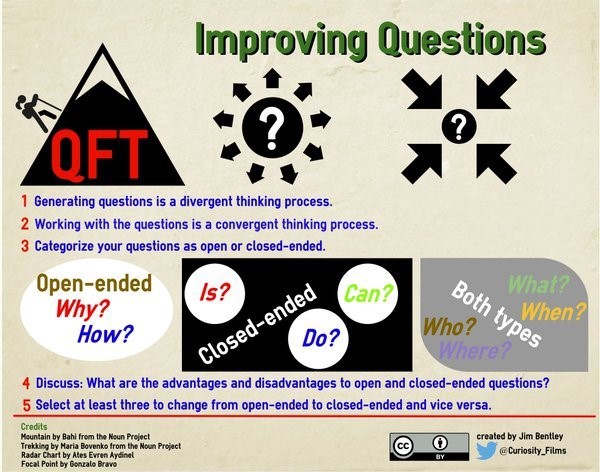
The QFT is both limiting and liberating. The protocol for generating questions is limiting in the sense that students may not discuss, judge, or answer their questions when beginning. It’s liberating at the same time, since students feel confident that any question they initially put out deserves a chance to be improved before prioritization. The protocols for producing and refining questions are liberating because the impetus comes from students. They promote student independence by barring teachers from supplementing student thinking as they think of and improve their own questions. It creates a space where all students are able to generate, develop, and hone their own questions without fear of judgment.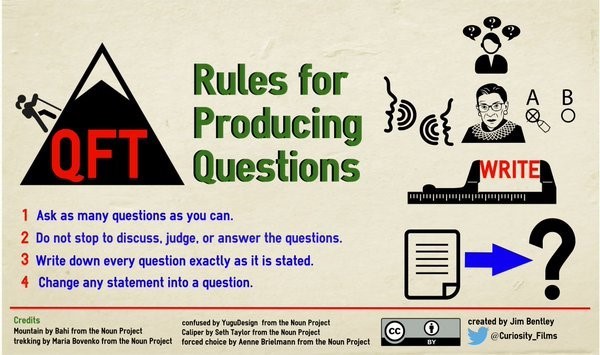
For the past two years, my students and I have been using the Question Formulation Technique in our PBL classroom to broaden our knowledge about public policies, science, math, and language arts. The QFT can be implemented at various points in the PBL process. I use it to launch projects, and in the midst of a project it can help sustain inquiry or serve as a formative check to see what students are wondering.
A Project-Based Learning Unit on Water
At the beginning of the 2015-16 school year, we launched a large project based learning unit on water. The QFocus: Bottled Water v.s. Tap Water.
Students went through the QFT, following the protocol with just one twist. Rather than working in a group with a recorder to note questions, teams were given a large paper divided into fourths. Each student was given 2 minutes to generate as many questions as they could in their quarter of the paper. The paper was rotated, students reviewed their classmates’ questions, and then began brainstorming and recording again. The process repeated until students got their original quarter back.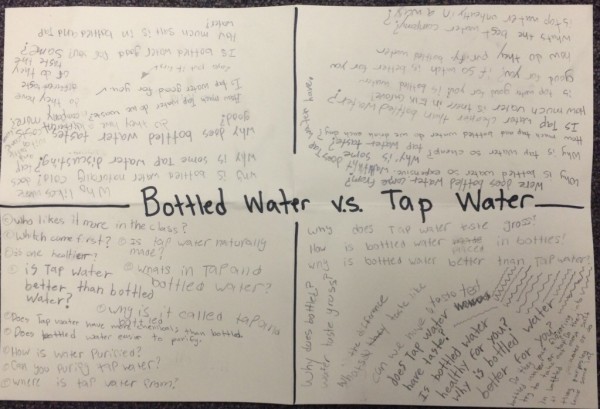
The QFT has led to a series of questions we are now actively r
esearching: Where does our water in Elk Grove come from? Where does our waste water go? Who maintains storm sewers? Where do storm sewers drain? How fast do aquifers recharge? Is tap water safe to drink? Why does bottled water taste so good? How do the costs of tap and bottled waters compare?
As a part of the project, students conducted a tap vs. bottled water taste test and are making a short documentary film about the event. Stay tuned for a final product to be completed this spring.
Asking Questions About Music and Multiples with the QFT
Recently we launched another PBL unit on multiples. The QFocus was two-parts: “Making music with multiples” and an audio file I created and posted on my Edublog.
Why a unit on multiples? Why use the QFT for this? For years I’ve watched students use and confuse the concepts of greatest common factor, least common multiple, common multiples, and lowest common denominator. Reflecting on this, I believe that students in the past have had just
enough time to become familiar with these concepts but have never had the opportunity to deeply understand what multiples are or how they are used.
One summative product students are engineering is a “song” using sounds playing at various multiples of time. Our “instruments” are sounds generated by Audacity or ones they have recorded.
At the start of the unit, students went through the QFT. Here are the initial questions students prioritized for their inquiry:
- Are multiples used to make music we hear on the radio?
- What other artistic things can people do involving multiples? (i.e. dance, art, marching bands)
- Who thought up multiples? When? How? Where? Why?
- Can music be used to solve math problems?
- Are multiples related to beats in music? (beats per minute)
Already, I’m seeing a level of mathematical understanding on the part of students that I have not witnessed in years past. As we engage in mathematical discussions, students are not using and confusing these terms. When it comes to problem solving scenarios, students are showing more precision in knowing when and where to apply which concept to arrive at a solution.
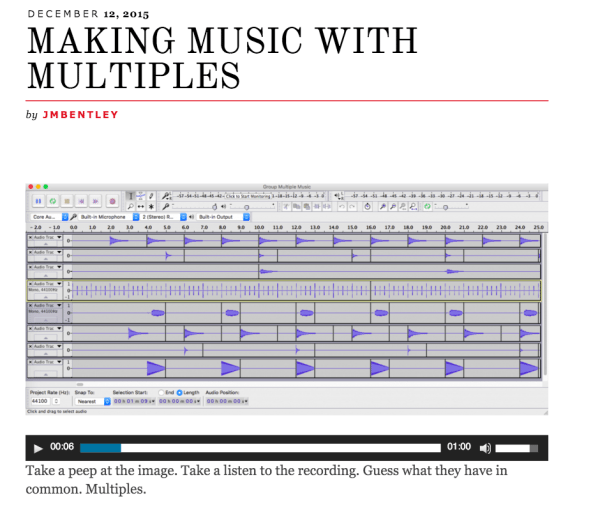
The Sky’s the Limit
What’s next for the use of the QFT in my classroom or in leading Project Based Learning workshops for the Buck Institute for Education? It seems as though the sky is the limit.
I’ve recently adapted the QFT for use in Google Forms and Google Sheets. The Form outlines the steps necessary to facilitate the QFT. The Sheet empowers teachers participating in BIE trainings to digitally curate and add to the questions they’ve prioritized as essential to their understanding of Gold Standard Project Based Learning.
I think back to a memorable line in Rothstein and Santana’s conclusion where the authors cite cognitive psychologist Robert Sternberg. He says, “If we always give students the questions, and demand only the answers, we teach them to answer prefabricated questions rather than to ask questions worth asking.”
We’re reaching out to mathematicians, musicians, and artists to answer some big questions this year: Who first thought of using math to write music? What other artistic things can we do with multiples (dance, art, marching bands)? Some might dismiss these questions as too far-fetched. I personally have no clue what answers we’ll find or what new questions will arise. At the top of my Edublog is a quote from Walt Disney that defines my teaching and the culture in our room: “We keep moving forward, opening new doors, and doing new things, because we’re curious and curiosity keeps leading us down new paths.”
I am a teacher, but I am also a co-learner with my students. Whatever the next iteration of the QFT is in our classroom, I know this: the focus will firmly remain on students. It is only when we encourage students to produce imaginative, innovative, and daring thoughts, to provide those sparks of ideas the space they need to smolder and grow, that we can say that we’re truly empowering students or promoting a student-centered form of learning and teaching.
Jim Bentley is a 5th/ 6th grade teacher in the Elk Gr ove Unified School District in California. He is a Buck Institute for Education National Faculty, providing training to teachers on Gold Standard Project Based Learning. Bentley serves as a Teacher Ambassador for the California Education and the Environment Initiative. He is a guest blogger for P21.org, Ten Strands, and has contributed to books on teacher effectiveness and deeper professional learning. Follow Jim Bentley on Twitter @Curiosity_Films.
ove Unified School District in California. He is a Buck Institute for Education National Faculty, providing training to teachers on Gold Standard Project Based Learning. Bentley serves as a Teacher Ambassador for the California Education and the Environment Initiative. He is a guest blogger for P21.org, Ten Strands, and has contributed to books on teacher effectiveness and deeper professional learning. Follow Jim Bentley on Twitter @Curiosity_Films.
This blog was made possible through the support of a grant from the Sir John Templeton Foundation. The opinions expressed in this publication are those of the author(s) and do not necessarily reflect the views of the John Templeton Foundation.

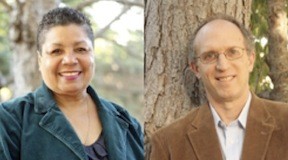

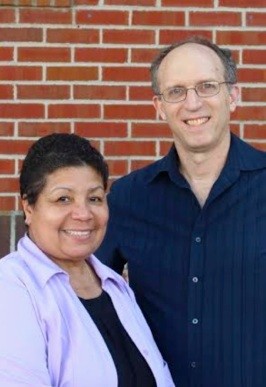
Hi,
I’m working on a project with the beginning focus of Identifying the Best Republican Candidate and Identifying the Best Democratic Candidate. The goal of the project is for students to design this person based on information about the voting population. I’m curious on anyone’s thoughts.
Thanks.